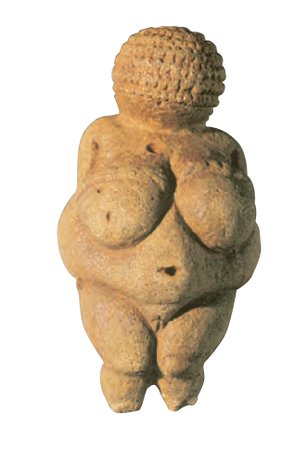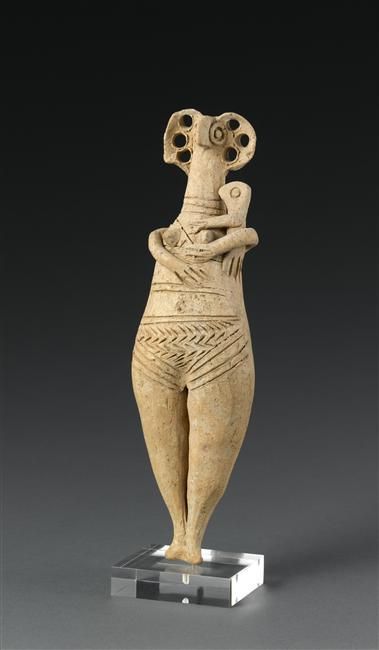
One of the most eye-opening and consciousness-raising books I’ve ever read is the revolutionary The Alphabet Versus the Goddess by brain surgeon, Dr. Leonard Shlain. Shlain proposes the thesis that since the invention of writing and then the alphabet, Western culture has progressively moved into a left-hemisphere masculine mode of thinking which is intolerant of right-brain feminine thinking and values. Most of what follows is in his words.
The Great Goddess began to lose power at the watershed moment when oral pre-history turned into written history. Her consort, once weak and inconsequential, rapidly gained size, stature, and power until eventually he usurped her sovereignty. The systematic political and economic subjugation of women followed, and slavery became commonplace. The introduction of the written word, and then the alphabet, initiated a fundamental change in the way newly literate cultures understood their reality. This change in mind-set fostered patriarchy. Conceiving of a deity who has no concrete image prepares the way for the kind of abstract thinking that inevitably leads to law codes, dualistic philosophy, and objective science, the signature triad of Western culture.
Goddess worship, feminine values, and women’s power depend on the ubiquity of the image. God worship, masculine values, and men’s domination of women are bound to the written word. Word and image, like masculine and feminine, are complementary opposites. Whenever a culture elevates the written word at the expense of the image, patriarchy dominates. When the importance of the image supersedes the written word, feminine values and egalitarianism flourish.
In Europe during the high Middle Ages (1000 — 1300 B.C.) women mystics and women’s spirituality were an accepted fact of life. But within the church a small group of highly educated and determined men began to “wrestle this dynamic medieval culture away from its feminine orientation toward masculine values” that focused on sexuality and literacy. The misogyny of the Church reformers was blatant.
In 1073, believing that the corruption within the church was the result of priests who broke their laws of celibacy, Pope Gregory VII assumed the papacy and authorized the laity to withdraw support from any priest who did not renounce his wife and children. This precipitated a social revolution in which women and children were abandoned to the horrors of starvation, prostitution, servitude, murder and suicide. Damian, a fanatical reformer, described women as “Satan’s bait, poison for men’s souls, the delight of greasy pigs, inns where unclean souls turn in.”
Shlain writes that the values that typify the right brain include empathy with the plight of one’s companions, generosity toward strangers, tolerance of dissent, love of nature, nurturance of children, laughter, playfulness, mysticism, forgiveness of enemies and nonviolence. These aspects, in both men and women, express the feminine gatherer/nurturer side of human nature.
In contrast, people tend to exhibit left-brain attributes when absorbed in work, goals, focus, power, and money. Cruelty, argument, violence, a disregard for nature, and lack of concern for the lame and the halt round out the list – in short, all those attributes that tend to make a man or woman a successful hunter/killer.
The Gospels that contain the words of Jesus Christ overwhelmingly accentuate the values of the right brain. Yet, the leaders of the Reformation ignored the teachings of the very book they passionately defended as the revealed truth. Why? Luther was an abused child; Calvin’s mother died when he was young.

Shlain notes that the European witch craze from 1460 – 1648 A.D. was the result of the ballooning up of the left hemisphere’s hunter-killer attributes, which was inflated by the rapid expansion of printing press-generated alphabet literacy. Hysteria is unmanageable fear expressed by emotional excess; many men associate it with women, but no superstition that any group of women has ever believed has come close to the level of credulity and psychosis that seized the most educated elite male during the witch craze. The witch craze assumed its most monstrous proportions in Germany, the birthplace of the printing press.
The vast majority of women had no protection. Conducting oneself in a docile, silent, and unobtrusive manner, avoiding female friendships, and sticking close to home and husband was the only way to avoid the glowing pincer’s grasp. Modern men have been known to ask why so few women in the last centuries made stellar contributions to the arts and sciences. Most men have never had to fear sticking out from the crowd far enough to elicit the heart-stopping accusation of “Witch!”
In sum, every society that has acquired alphabet literacy has become violently self-destructive a short time afterward. This madness has been associated with a virulent misogyny and spelled trouble for images, women’s rights, goddesses, and right-brain values. The process of writing and reading initially reinforces left-brain values to the detriment of right-brain values.
Stay tuned: In Part II I’ll share Shlain’s insights on how television and computers impact the brain.
Jean Raffa’s The Bridge to Wholeness and Dream Theatres of the Soul are at Amazon. Healing the Sacred Divide can be found at Amazon and Larson Publications, Inc. Jean’s new Nautilus Award-winning The Soul’s Twins, is at Amazon and Schiffer’s Red Feather Mind, Body, Spirit. Subscribe to her newsletter at www.jeanbenedictraffa.com.


12 Responses
Oh, I loved this Leonard Shlain’s book so much! After reading, I sat down and wrote one of my long poems, such was its inspiration I received. And in many ways it featured in the final essay of my Jungian themed ‘Animus Diet’ too. What an education this book was and one I can highly recommend to all your readers! Thank you for delving into a subject so close to my heart, I’m already looking forward to next week’s instalment. Love and light, Deborah.
Thank you, Deborah. This is one of my all-time favorite, most eye-opening, consciousness-raising, and inspiring books ever too. Shlain’s factual, scientific knowledge of the brain combined with his extensive historical research makes for an extraordinarily powerful message. I think if it were to be required reading for every college freshman it could have the potential to bring contemporary culture to a level of balance it’s always aspired to but never attained! I can’t recommend it highly enough either!
Great information! Thank you, dear Jeane. I knew in the first century AD, the Catholic Church had begun to proceed with the domination by men; although it is not their invention, in other religions, it has become commonplace. But I have never thought of the topic of Images and Writing! I must admit here, if I have understood correctly that the image is feminine, and the writing is masculine, it clears us that the writing depends on language, but the power of images is independent of any tongue in the world! Woman rocks.🥰💖
Yes! You nailed it, Aladin. The power of images is independent of any tongue in the world. It’s universal. Archetypal. The language of the body. Of dreams. Of Nature. Of life. The feminine in all of us rocks!!!
Wow. Insightful.
Hi Jen. Thanks for writing. I’m glad you gained some insights from this. So did I. Big time! Jeanie
Grim – in a word. It’s as well to remember our history and what gave rise to it. From the beginning women were made scapegoats – woman blamed for the downfall of man from eating the apple in the Garden of Eden if we look at this creation story as myth.
Well, maybe this is the battle. For the rise of feminine energy for the good of us all, men and women.
Thanks Jeanie. Dr. Iain McGilchrist and his podcasts address left and right hemisphere functioning. I’ve heard of Leonard Shlain. Love, Susan
Yes, knowing our history can open our minds to a new vision for the future. I know of Dr. McGilchrist’s wonderful work and find it extremely helpful in understanding our fullest capacities as humans. We have so much more potential that we’ll never use unless we leave either/or dualistic thinking behind and move into a brave new world of both/and. Love, Jeanie
Thank you again. I have shared this with my various women’s groups.
I appreciate that, Lynnea. Thank you,
This piece is powerful and so upsetting, Jeanie. I’ll use Susan’s term “grim.” Thank you for writing it and sharing these ideas. I haven’t read Slain’s book. Our women’s mythology group is studying the loss of sacred feminine during the Iron Age when Marduk killed Tiamat in Babylonia. Some of us are re-reading Elaine Pagels, but our main text is ‘Myth of the Goddess’ which we’ve explored repeatedly since we began studying together in 1990. Once Tiamat claimed the power of creation without need of a feminine partner ~ 1200 BCE, this idea spread all over Mesopotamia and we’re still suffering under it. We’ve always worked with image and there are few goddess images from this time. Either they weren’t created or they were destroyed.
The Babylonian section of the Metropolitan Museum of Art in New York City is alarming and unpleasant, at least for me. The glorification of war, weapons, and killing. On visits to spend time with the Egyptian collection, I found myself avoiding the Iron Age exhibits.
As I learn more about the Iron Age and it aftermath, including the repression of Gnostics, Cathars, Kabbalism, and Alchemy, I’m furious–and helpless to change history. I feel we’re still living in this conflict where the masculine “word” destroys the feminine “image” and heart. And I say this as I sit at my computer spewing words. The repression of the feminine is making a come back in many parts of the world. It breaks my heart. Next, I’ll read your 2nd part of this series. With love and gratitude for sharing your wisdom, Elaine
It breaks my heart too, Elaine. I see the repression coming back as well. I feel a strong need to speak out against it, and especially to awaken women to these realities. I know your women’s group studies have been a grounding source for you. Wouldn’t it be cool if more women had groups like this? It would help to have some kind of description of the books you read and how your group has operated all these years and what kinds of leadership and activities you’ve engaged in. I wonder if someone in your group would be interested in writing out a guide with a description that could be distributed to other women who are interested. I’m sure there are a lot of women who long for something like this. Perhaps The Alphabet and the Goddess could be included in it with the historical perspective to balance the Myth of the Goddess, which I know is a fantastic book!! Anyway, thanks for writing. And thank you for your wonderful blog posts. Here’s the link for readers who don’t know about your work: https://elainemansfield.com/blog/ Love, Jeanie